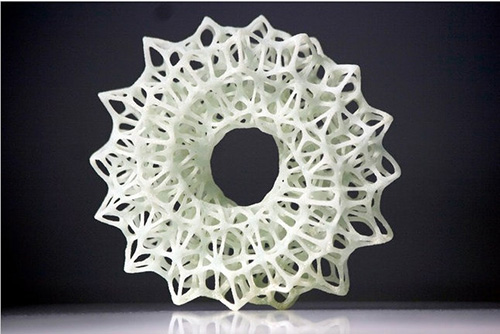
Acrylonitrile butadiene styrene, better known as ABS, is a thermoplastic that can be used as a 3D printer filament. As a thermoplastic it has the characteristics of becoming soft and moldable when heated and then returning to a solid state when cooled. ABS is petroleum based which accounts for the unpleasant, hot plastic odor it emits when heated. It is naturally beige before colors are added.
To be used as a filament for additive manufacturing, ABS must pass three tests needed for it to be used as a 3D printing filament. First, it must be extruded into a plastic filament. Secondly, it must go through a second extrusion and trace-binding during the printing process. Finally, it must successfully fulfill its end use application. ABS passes all three tests and is known for having strength, flexibility, machinability, and a higher temperature resistance than PLA.
ABS is a strong plastic with a mild flexibility, having a tendency to bend rather than break. It can be sanded and machined with ease. It is well known for its use in the production of Legos™. It softens at 90°C, it melts at 180°C and bonds strongly at 230°C.
ABS is considered to be hydrophilic. When it is exposed to moisture for extended lengths of time, such as humidity, ABS will bubble and spurt from the tip of the 3D printer nozzle. Therefore, it is advised that the filament be kept in an airtight container for long-term storage. If it is exposed to moisture for extended lengths of time, it can be dried in a food dehydrator.
ABS is soluble in acetone. Parts can be welded together by carefully applying a drop or two of acetone to the plastic. Also, when brushed or dipped in acetone, a smooth, high gloss finish can be obtained. It cleans up very nicely with acetone.
For a successful 3D print, ABS requires a heated platform. It is also recommended that the room temperature be kept quite warm or the printer be enclosed in a small warm chamber. A cardboard box placed over the printer during a print job can accomplish this objective. Without taking the above precautions and providing a level platform, ABS is subject to bottom warping, curling, and splitting.
ABS is definitely more tempermental during the printing process than its peer, PLA. However, the end product has more strength and flexibility. Also, it can withstand higher temperatures than PLA. It is advisable to use ABS when strength is needed and heat exposure is probable.